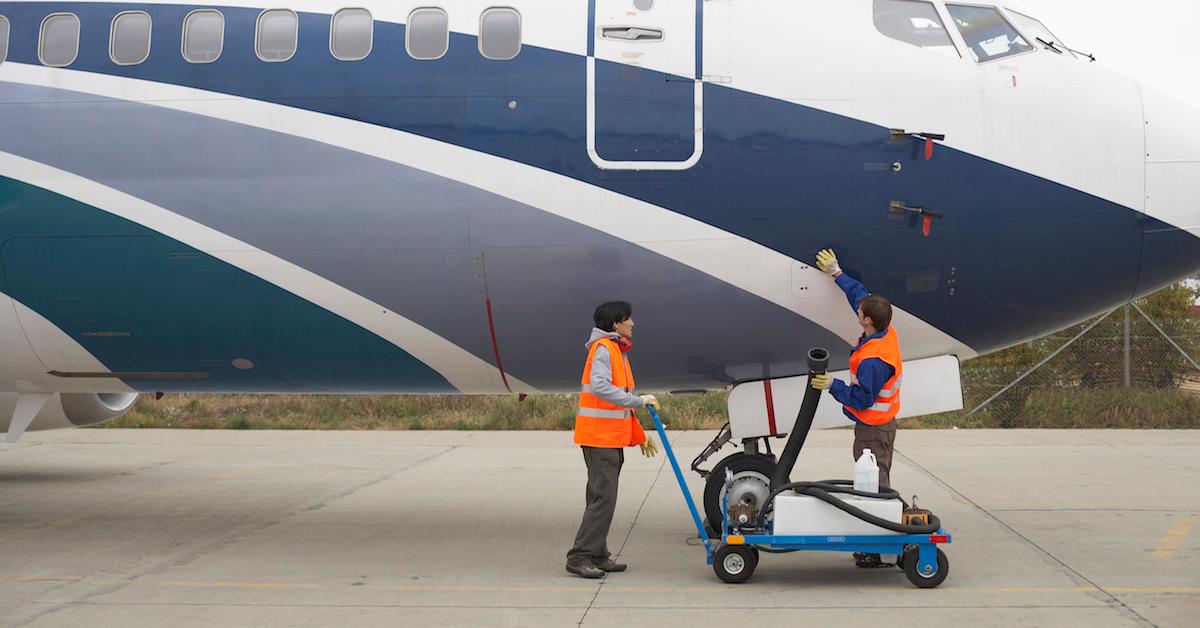Is Sustainable Aviation Fuel Possible?
Published April 20 2021, 11:00 a.m. ET

One of the biggest complaints about air travel these days is that, unlike cars and other vehicles that are able to run on hybrid or electric power, airplanes are still powered by fossil fuels. Aviation might be a necessary evil in terms of global travel — and though technological advances in sustainable aviation are rapidly becoming a reality, the worldwide acceptance of sustainable aviation fuel might be many years away from becoming the standard.

Why do we need sustainable aviation fuel?
According to Sky NRG Solar Inc, air travel accounts for around 3 percent of all manmade global emissions. The theory is that by 2050, that number could rise to an astonishing 22 percent of the planet’s proposed “carbon budget.” It is an indisputable fact that the environmental impact of aviation is on the rise, and many airlines and industry leaders understand the severity of that upward trend.
At the same time, those industry leaders cannot ignore the economic impact of such perceived growth. It puts many airlines in a sort of conundrum: as business gets better, the planet gets worse. With that in mind, many in the aviation industry have made open commitments to carbon neutrality, with the hope of reducing net aviation emissions by at least 50 percent by 2050. But how, exactly, do they plan to do this?

What is sustainable aviation fuel?
The answer to the aviation industry’s emission problems lies in creating an effective and inexpensive sustainable aviation fuel. They aren’t going to stop planes from needing to transport goods and people from place to place, so they need to make sure that those planes are at least as clean-burning as they can possibly be.
According to BP, the use of sustainable aviation fuel is on the rise. Similar to traditional jet fuel, sustainable aviation fuel is created from feedstocks like cooking oil, as well as non-palm waste oils from animals or plants, as well as solid waste from homes and businesses like paper, textiles, food scraps, and packaging. Other sources of sustainable aviation fuel include things like waste wood from forestry and energy-producing crops like algae.
BP’s version of sustainable aviation fuel is made from cooking oil and animal waste fat, which doesn’t make it vegan, but it also doesn’t make it fossil fuels. As BP is a controversial and massive oil and gas corporation responsible for immense pollution, one might want to take what the company says with a grain of salt. Still, reutilizing any resource in an effort to minimize carbon emissions seems like a step in the right direction.

How much carbon does sustainable aviation fuel save?
BP indicates that sustainable fuels can reduce carbon emissions by 80 percent when compared to traditional jet fuel. Of course, there are several other innovations in the works for reducing carbon emissions created by traditional jet fuels. These include physical changes to the planes themselves, or planes that are powered by electricity.
What is electric aviation?
Electric aviation, otherwise known as e-viation is a very new industry, but one that has been growing steadily as public opinion sways further towards a more clean-burning future. Though the majority of electric planes have yet to find any mainstream, commercial success, e-viation companies like magniX have high hopes for the future of electric flying.
Most electric planes are powered by a lithium-ion battery rather than jet fuel, as explained by Mashable. This battery powers an electric motor in the same way a car battery does and because the planes don’t have to be loaded with fuel, they can be far lighter, 60 percent lighter, in fact. This means that they could fly higher, faster, and cleaner than the planes that came before.
What are some other innovations in sustainable aviation?
Besides just shifting away from fossil fuels, engineers are working to change the physical properties of the airplanes themselves to reduce carbon emissions. According to PreScouter, airplane efficiency can be improved by the addition of winglets, devices mounted at the tip of the wings that improve the aerodynamic flow around the wingtips, thereby creating additional thrust.
Navigation systems can also be updated so that planes can detect and avoid things like high winds, storms, or other weather conditions that might otherwise slow things down. Finally, PreScouter discusses a type of airplane called the “double-bubble” D8, an airplane that could revolutionize commercial air travel on several levels, including emissions, fuel burns, and noise.
All this equates to some impressive changes for the aviation industry and some good news in terms of reducing greenhouse gas emissions. As long as technological advances continue to be made, the industry has nowhere to go but up.